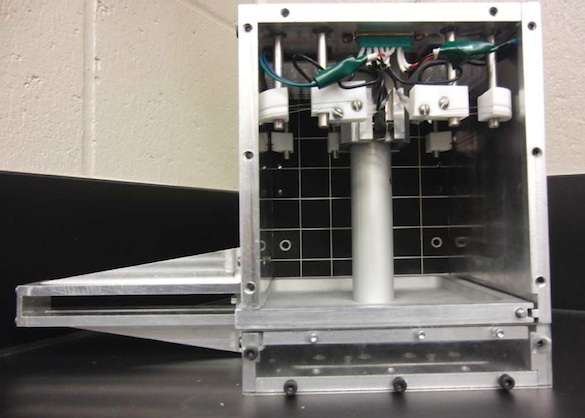Collection of Regolith Experiment (CORE) on a Commercial Suborbital Vehicle
PI: Josh Colwell, University of Central Florida
PI: Josh Colwell, University of Central Florida

- TA07 Human Exploration Destination Systems
We propose an experimental program that tests the collection of asteroid regolith by subjecting the experiment to microgravity conditions which will closely simulate the environmental conditions on the surface of an asteroid. Asteroid 1999 RQ36 that will be explored by OSIRIS-Rex beginning in 2019 has a mass ~ 10-12 times less than the Moon. Particular interest at near-zero gravity will be emphasized in order to determine the effects of very low gravity on regolith collection and contact with instrumentation.
The reduced-gravity regolith collection experiments will advance the TRL of experiment hardware for future scientific experiments on asteroids. The technology described has been extensively tested in a laboratory setting and is ready for analysis in a reduced-gravity environment. The current TRL of CORE is 4 (with some components at TRL 7). The operational capabilities of some of the internal components of CORE have previously been demonstrated in the operational environment of space.
NASA
The Collection of Regoltih Experiment (CORE) builds upon previously flown dusty regolith impact experiments (COLLIDE, Colwell and Taylor 1999; COLLIDE-2, Colwell 2003) that have been modified with a collector mechanism in order to acquire samples of loose regolith. The experiment consists of a sample of simulated planetary regolith and a sample retrieval mechanism that penetrates the regolith and scoops out a sample of about 10 grams during microgravity conditions. The regolith reservoir has a mechanical door in place to prevent particles from escaping due to accelerations experienced during launch and prior to free-fall. When activated the tray cover slides open exposing the regolith. Next, a launch mechanism forces a hollow tube to impact the regolith-filled tray. An inverted hollow hemispherical scoop inside the tube is then rotated 180° that results in sealing off the bottom of the tube so that the regolith sample is contained within the tube.
Technology Details
-
Selection DateAFO3 (Mar 2012)
-
Program StatusActive
- 1 sRLV
Development Team
-
PIJosh Colwell
-
Organization
-
SponsorUniversity Of Central Florida

